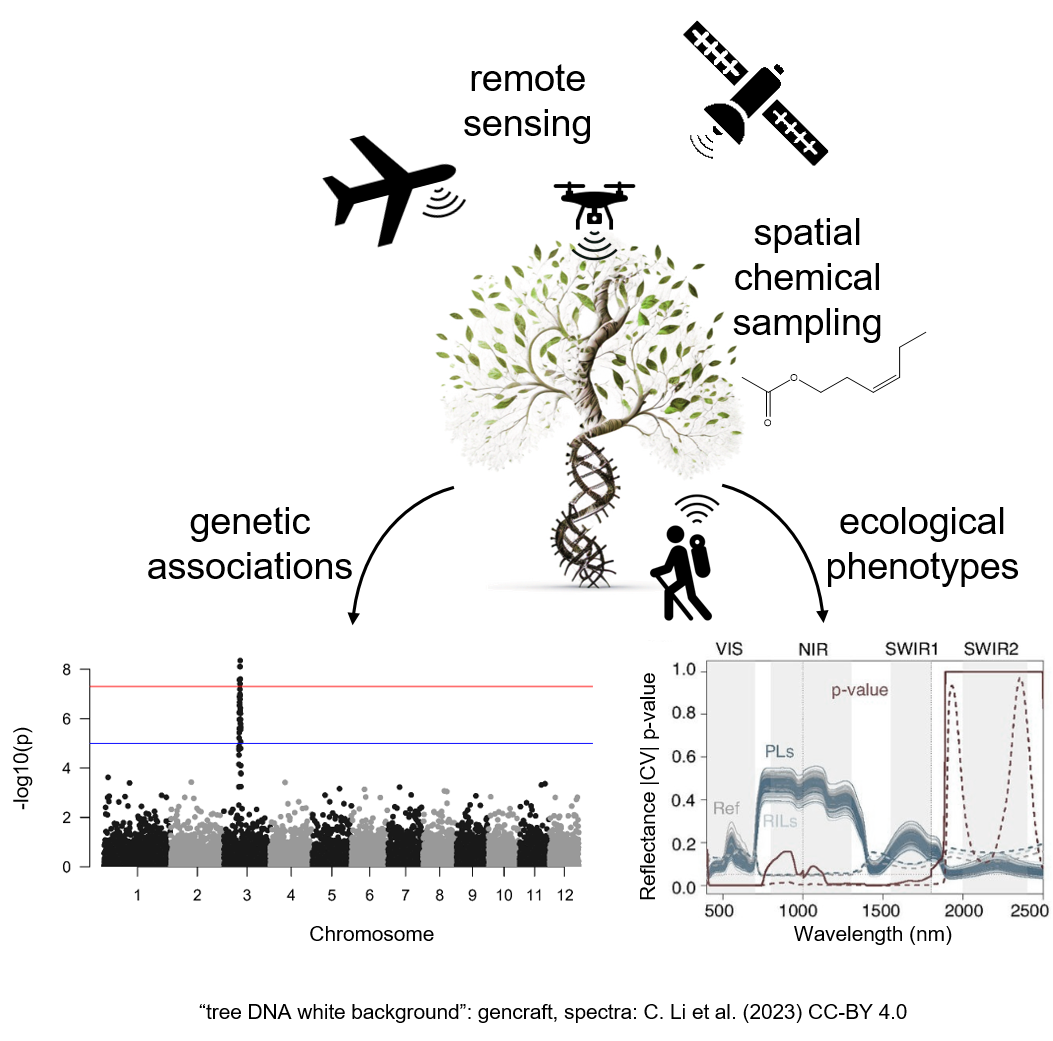Research
Biodiversity and spatial genetics
Biodiversity research aims to understand the great variety of life on earth, how it is distributed over the globe, and how its composition - both biological and spatial - matters for the processes that generate and maintain ecosystems, including those that humans depend on.
Most organisms on earth depend on plants, directly or indirectly, for food and shelter, so understanding and managing plant biodiversity is critical for understanding and managing biodiversity as a whole. When we think of biodiversity, we often think about numbers of species - more species, more diverse. But biodiversity encompasses many aspects that matter as much, or much more, for understanding functions and managing and conserving ecosystems.
See for example why it is important to monitor genetic diversity (from space) , how chemical signaling matters in ecology, and how we can know.
Our approach

We are interested in ways to map plant genetic diversity, its relationship to phenotypic or trait and functional diversity, and to other aspects of biodiversity and ecosystem processes. Together with collaborators inside and outside of UZH, we take an interdisciplinary approach that includes high-throughput georeferenced sample harvesting, genetic sequencing and bioinformatics, and analyses of different traits, and incorporates remote sensing (optical spectroscopy, structure-for-motion, LiDAR, and direct chemical sampling from the air), statistical modeling and machine learning.
We aim to lift some of the barriers to having enough information on the genetic biodiversity of life on earth. Because as rapidly as species are disappearing, the unique genotypes within species may be disappearing even faster.